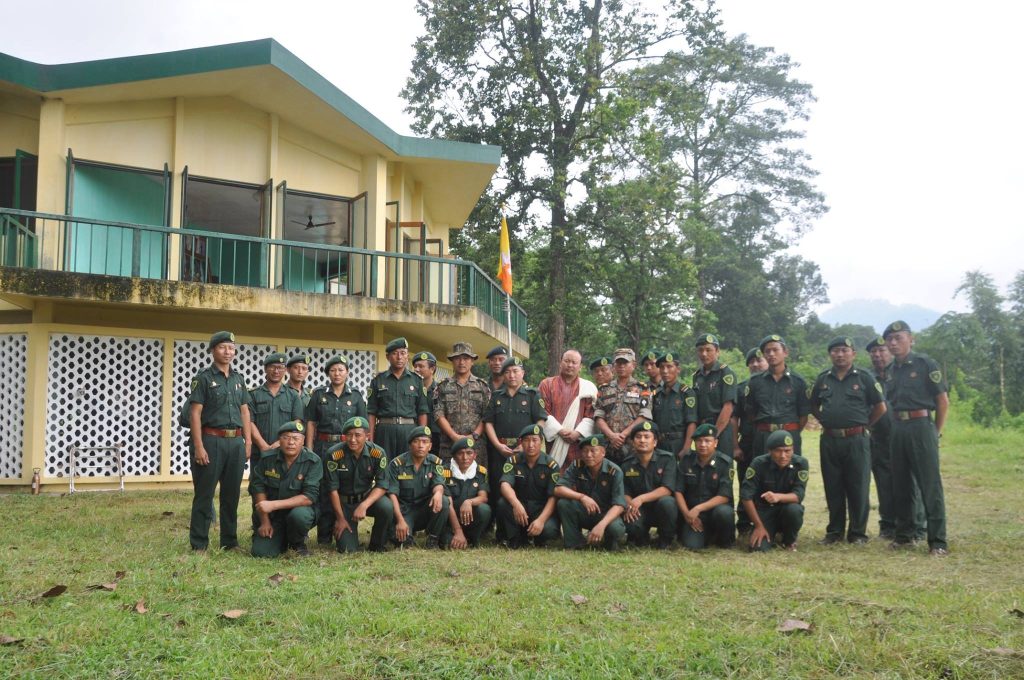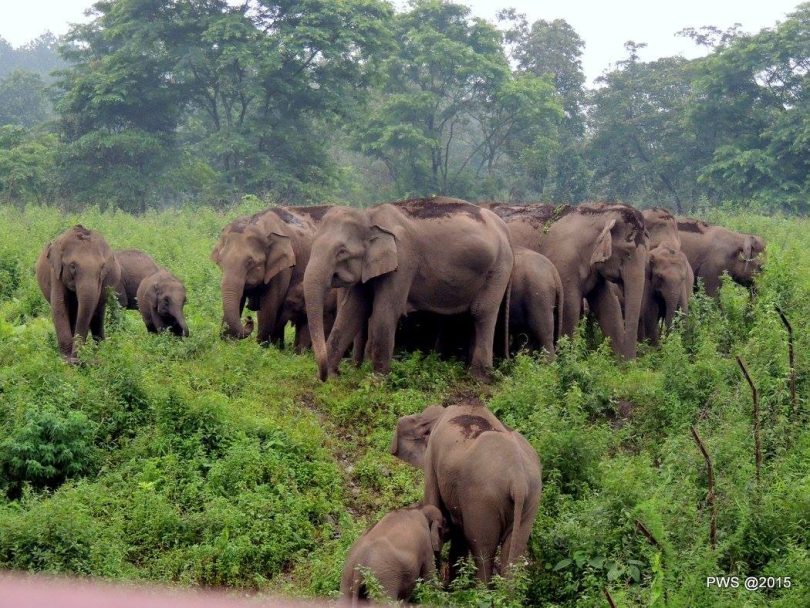The eagerly anticipated opening of Bhutan‘s Phibsoo Wildlife Sanctuary (PWS) to tourism has been temporarily halted as it becomes part of the broader Gelephu Mindfulness City project.
Initially scheduled for a soft launch on December 17, 2023, the delay is attributed to the realignment of a 5 km safari road trail and the necessary clearing of bushes along and near the road.

The Phibsoo Wildlife Sanctuary, the second-smallest national park in Bhutan, spans 268.93 square kilometers in the Sarpang and Dagana districts. Positioned along the border with West Bengal, it connects to Jigme Singye Wangchuck National Park and Royal Manas National Park through a biological corridor. With elevations ranging from 200 to 1600 meters, the sanctuary is flanked by the Sunkosh River to the west and the Sanathang River to the east. Recovering from challenges in the 1990s due to internal strife, the park officially came to life in 2009.
Bhutan for Life has supported the sanctuary’s eco-tourism plans, which include amenities like toilets and a comprehensive business strategy incorporating glamping, camping, safari jeep rides, bird watching, and zip lines.
Despite being the smallest of Bhutan’s 10 national parks, Phibsoo boasts exceptional biodiversity and distinctive features. According to WWF Bhutan, the sanctuary is home to the unique Spotted Deer and natural Sal forests, which are not found elsewhere in the country. Additionally, it hosts vital tropical species such as elephants, gaur, and golden langur.
Originally, the park was set to be open from October to March, with a 3 to 4-month closure during the rainy season to avoid flooding. Phibsoo, historically designated a Reserved Forest in 1974, earned the status of a wildlife sanctuary in 1993, with active conservation efforts commencing in 2009.
Yee Getway’s Pema Choden, in a documentary on PWS, emphasized the sanctuary’s significance in protecting endangered species, including the rare Agar tree. The area is a haven for diverse bird species, with over 60% of Bhutan’s birds and five new species discovered in the past five years.


Camera trapping methods have identified 36 mammal species in PWS, and efforts to manage habitats and counter poaching have seen an increase in the tiger population from one in 2018 to seven in 2021.
A major challenge for PWS is its porous international border, making it susceptible to poaching of animals and valuable timber.
The introduction of eco-tourism plans is strategically located in safe buffer zones and transit areas, offering activities such as river-side camping, picnic activities, and jungle treks.
The plans also consider the impact of the Sarpang to Lhamoizingkha highway, expected to traverse the park’s edges, with assurances that environmental clearance will not be granted in core areas, and the road will aid in border patrolling and security against poachers.
Phibsoo Wildlife Sanctuary: Overcoming the Challenges

The Phibsoo Wildlife Sanctuary (PWS) faces several challenges as discussed above, but strategic measures are being considered to mitigate these issues:
Poaching and Timber Theft Along the International Border:
Enhanced patrolling and vigilance by park rangers to deter and apprehend armed poachers.
Collaborative efforts with law enforcement agencies and international cooperation to strengthen border security.
Road Construction Impact:
Ensuring that the Sarpang to Lhamoizingkha highway construction adheres to environmental regulations and does not encroach on core sanctuary areas.
Leveraging the road for increased patrolling capabilities against poachers and enhancing overall security.
Conservation of Endangered Species:
Implementing strict anti-poaching measures and habitat management to protect and boost populations of endangered species, such as tigers.
Ongoing research and monitoring to understand the needs of rare species like the Spotted Deer and Agar tree, tailoring conservation efforts accordingly.
Environmental Disturbance from Tourism Activities:
Carefully planning and locating eco-tourism activities in safe buffer zones and transit areas to minimize the impact on the core sanctuary.
Implementing sustainable tourism practices and promoting visitor education on wildlife conservation.
Weather-Related Challenges:
Developing infrastructure and amenities resilient to weather conditions, allowing for a more extended tourism season and reduced closure periods.
Implementing measures to manage and mitigate the impact of floods and rains on the sanctuary.
Community Engagement and Awareness:
Establishing community-based conservation initiatives to involve local communities in protecting the sanctuary and raising awareness about the importance of biodiversity.
Encouraging responsible tourism practices that benefit local communities and contribute to the overall conservation goals.
By addressing these challenges proactively and incorporating sustainable practices into the tourism plan, Phibsoo Wildlife Sanctuary aims to balance conservation with the benefits of responsible tourism, ensuring the long-term protection of its unique biodiversity.























